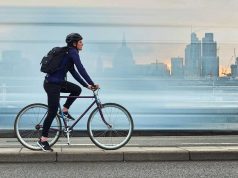Cairo West Magazine consults the Skin Experts
By Hilary Diack
The ongoing quest to improve the health and vitality of our skin is under the microscope again this month. We speak with two leading cosmetic specialists, Prof.Dr. Heba Hussein and Dr. Mohamed Mongy, about the most effective treatments available, along with the pros and cons.
CEM: Peeling is becoming very popular, what conditions can it be used for?
HH: There are various types of chemical peels, of different strengths. They can be used for treating many conditions, from light wrinkles to brown age spots, and acne.
What visible improvement can you expect after a peel?
It definitely gives a much better appearance; the skin is fresh and healthy and with an improved tone. It does not lift or reduce the flesh, only plastic surgery can achieve that.
What is the actual process, and how often can it be done?
The peel is an acid that actually burns off the outer layer of your skin, removing the damaged cells and letting the body produce a new layer to replace it. In most cases it can take between a few days to a week to slough off the dead skin and have the new skin shine through. For deeper peels it can take up to three weeks to heal. The usual course for light peels is four to five peels every one or two weeks, then you can repeat it again after six months. The heavier peels should only be used once.
What are the most commonly used peels?
Beta Hydroxy, or salicylic acid chemical peel, is popular for evening out skin tone and removing acne blemishes. Alpha Hydroxy, or glycolic acid peels, also help with skin tone, and deal with fine lines, as well as doing a deep cleanse that can help with blackheads. The Jessner peel is good for those with oily, acne-prone skin rather than for those with sensitive or dry skin. It is stronger than glycolic or salicylic acid peels, but weaker than TCA peels. The retinoic acid peel helps reverse environmental and sun damage to your skin and is effective and safe for any skin tone.
The stronger TCA and Phenol peels are not usually handled in-office; they can be uncomfortable and need anesthetic. Generally it is better to consider alternative therapies like Fraxel for more severe skin problems.
Can you have an allergic reaction to chemical peels?
There is a natural amount of trauma in the process, but so long as you avoid sun exposure there should not be any other reaction. That’s why winter is the best season. You should only have treatment with a certified doctor, that way you can avoid complications.
Is chemical peeling suitable for everyone?
Generally yes, althoughredheads and people with fine, sensitive skin should try to avoid them. We also start with young people who need peel treatments for acne.
What are other popular non-invasive treatments?
Laser hair removal, mesotherapy, fillers and Botox. When used judiciously by an experienced doctor Botox can create a much more youthful appearance. As we age our facial muscles contract, creating tension and frown lines. That can give us a bad-tempered appearance, so by working on specific areas we can still allow a mobile, expressive face, just minus those trouble spots.
What vitamins can help us look after our skin?
By following a balanced healthy diet, with plenty of fresh fruit, vegetables and protein a person should get enough of the necessary nutrients. Skin specifics are zinc, manganese, magnesium, vitamin E and selenium. Strangely, here in Egypt we see a big lack of Vitamin D, in spite of having constant sunshine we tend to cover ourselves up. Enjoy some time in the sun, especially before 10 a.m. and after 4 p.m.
CEM: Dr. Mohamed, what is the latest in skin resurfacing?
MM: The latest laser platform used for skin resurfacing is the Palmar Icon 1540 (XD & XF).
How long does the treatment take?
A full face session can take up to 15 minutes in the hands of a skilled laser operator and may need as little as a couple of minutes when doing a smaller area such as cheeks .
Is it uncomfortable?
Surprisingly the treatment is very tolerable and I have used it on myself! It doesn’t even need any numbing creams. That’s due to the sapphire lens contact cooling technology that leaves the surface of the skin ice cold that it becomes insensitive to pain.
Is there a recommended recovery period, and what are the immediate effects?
The nature of this laser is non-ablative, meaning the skin absorbs the laser beams without being wounded. Think of sun rays passing through glass without breaking it. The result is a pinkish skin that mimics an early tan for 24-48 hours only. Social downtime is zero as cover make-up can be applied as soon as treatment is over.
How is the treatment carried out and how many sessions are required?
The laser hand-piece moves over the skin in a stamping mode. The stamp is moved from one point to the next till the whole face is covered. According to each case and careful examination, a series of 3-5 treatments may be recommended for optimal results.
How does it compare with older techniques, and what are the advantages?
The ICON 1540 is considered the new gold standard for facial skin resurfacing due to its advanced spectrum shifting technology that adapts to each skin type and problem like artificial intelligence. The results are far superior to its predecessors with much less sessions and zero pain.
What are the most popular treatments at present?
Laser hair removal is by far the most popular procedure of all. And that is for both men and women. Laser stretch marks removal and leg veins removal are becoming more and more popular these days. Of course, no skin clinic operates without injecting Botox and dermal fillers.
Are there any specific vitamins that help our skin?
Well, it is simple really. Use a good moisturizing cream or lotion at night and a decent sunblock with SPF 30+ in the morning if you are an outdoor activity lover. Vitamin E is actually good for puffy eyelids and dark circles under the eyes, while selenium sulfide is important for a healthy scalp free of dandruff. I also advise Egyptian women to take glutathione supplement as it is proven to give skin a lighter color tone and prevents darkening under the arms and inner thigh areas.
Prof. Dr. Heba Mohamed Hussein MD
Professor of Plastic Surgery
Professor at Ain Shams University Cairo
Dr. Mohamed Mongy






Comments are closed.